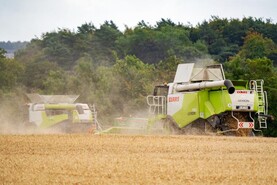Everything was going well until winter started in February. Apart from the odd dry day since, it has continued well into March and I have never been so glad we reduced numbers a little when trying early lambing.
Lambing itself went great and the mild weather in January meant ewes and lambs got out of the shed fast and on to fresh grass. This early lambing thing is easy, I thought.
And then it started raining. We ran out of grass. Lambs started finding holes and gaps in every ditch in the place. And then I got a phone call when I was out of the country for the off-farm job to say the sheep were out on the road again.
I’m still not sure how we didn’t just sell the whole shebang at that stage.
But we didn’t, as tempting and all as it was. Instead, we looked around the place the same way Brian Cody might cast a cold eye on an underperforming corner-forward. There is now a list of prerequisite jobs to be done if sheep are to be kept on. But, first, we need to get through the next month.
Buckets of meal
Meal levels have been ramped up to keep the ewes in milk and the lambs are on board for eating meal too. They are as quick to the trough as their poor mothers. They’ll kill out well and will return a good price, but the extra costs will quickly take the gloss off the margin. And that’s before you consider the extra work of hauling buckets of meal out through muck in the rain, usually on dark mornings, to animals that try to knock you over to get at it.
When we have survived this period and the grass starts growing properly, we will seriously weigh up the pros and cons of early versus midseason lambing. Sometimes, it is only when you change systems that you realise you were getting lots right before.
We will also look again at how previous generations operated. I would be the first to try new things and question the old ways, but supposedly out-dated technologies and approaches have delivered and are proven, more so than many of the untested innovations being sold to farmers today.
Grandmother’s advice
This view of mine has been influenced by the modern-day philosopher Nassim Nicholas Taleb (Google him). In many of his books, he suggests asking your grandmother for advice on everything from business management, ethics, food, financial investment, and everything else in between. By definition, grandmothers have survived and finished a race their children and grandchildren – with all our new technologies – are only still plodding through.
Another of Taleb’s ideas is to take lots of small risks all the time, but never such a big one that could wipe you out if it goes wrong. Most of the time, us farmers do not even realise we are taking small risks and trying something new. If it works out, we tell ourselves it was obvious in hindsight. If it does not, we can shrug it off and say, sure it was worth a try anyway.
Lambing early did not wipe out the sheep enterprise on the farm, but it sailed close to the wind at times. In times of uncertainty, one of the biggest challenges facing any of us is deciding whether system changes, expansion, or new ventures are small bets worth taking or big exposed risks that could prove fatal if the wind changes direction halfway through that heavily indebted voyage.
Let the COVID-19 shutdown be a time to recalibrate our views on risk and the fragility or robustness of our farming enterprises.






 This is a subscriber-only article
This is a subscriber-only article










SHARING OPTIONS: